Locomotive engineers talk to Katy Gosset about fatalities, close calls and how KiwiRail's trauma response programme is helping.
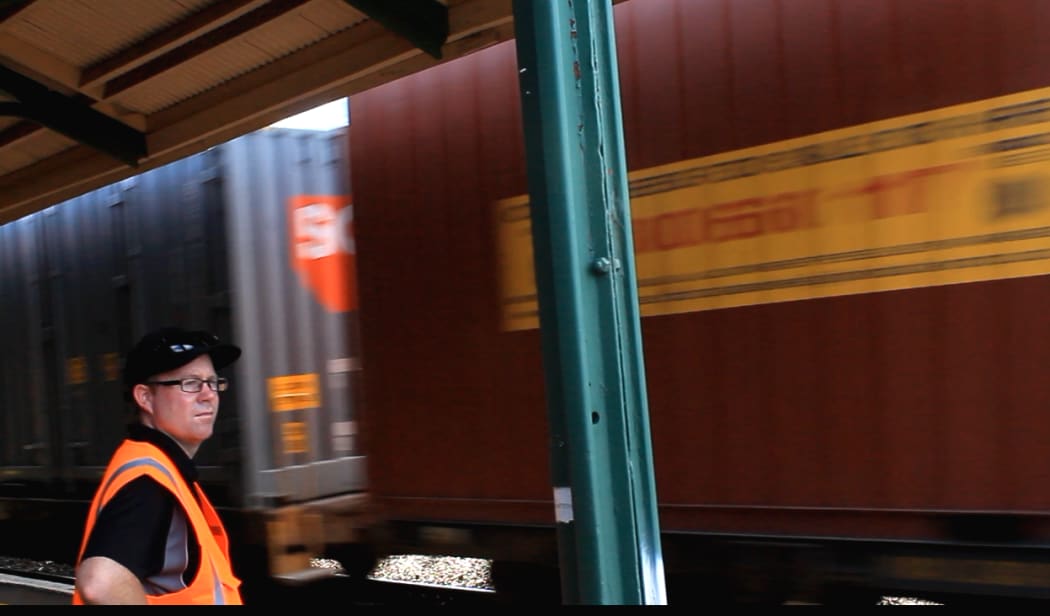
Jason Lawn watches a northbound train leave the Rangiora Station. Photo: Katy Gosset/RNZ
Almost every day, locomotive engineers on freight trains are challenged by cars that slip under the barrier arms at level crossings and shoot across the tracks.
Last year, nine people were killed on railway tracks in Canterbury alone.
Veteran engineer Alistair Cumming warns drivers not to take the risk:"If you misjudge it, the outcome can be the worst kind of outcome. Is it really worth it?"
The trauma of a death in a collision on a railway tracks isn’t only borne by the family and friends of the person killed. It’s carried by the locomotive engineer too.
Views from the cab
Peter Ryan - Team Leader for Locomotive Engineers
"It's that fight or flight instinct - your adrenaline kicks in a little bit, you sound the horn, your hand goes onto the brake, if not applying the brake, as an automatic response."
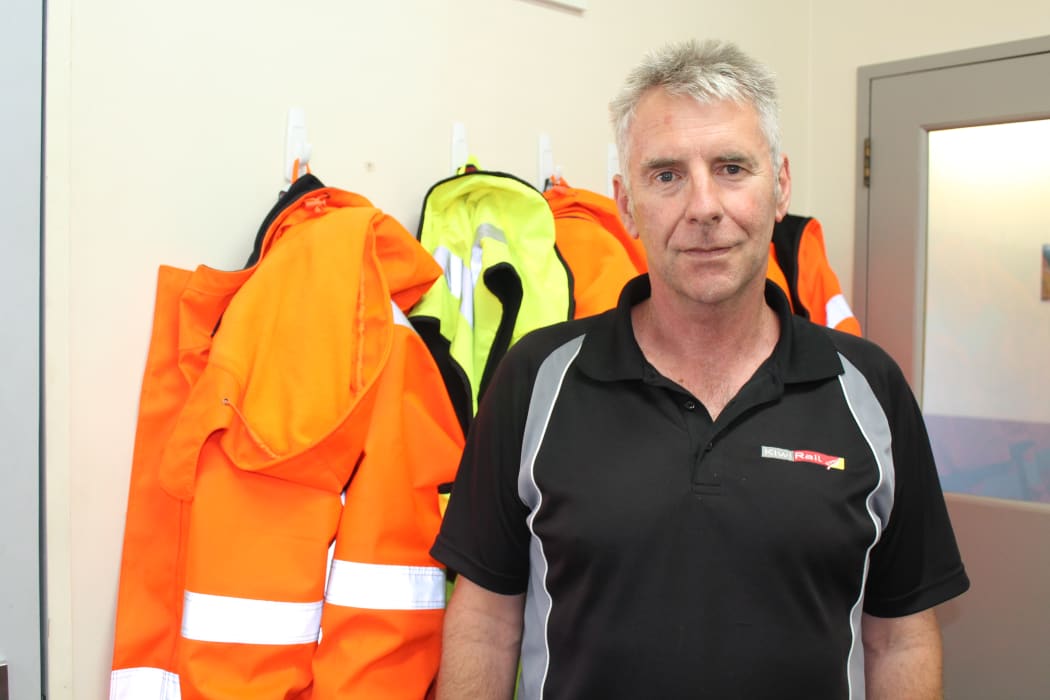
Peter Ryan Photo: Katy Gosset/RNZ
Ryan said close calls were frequent.
"Most people probably don't even appreciate or understand or the effect that that has on us."
Sometimes cars were abandoned on the tracks and, if a train driver came upon it at night, there was no chance of stopping in time. In those cases, a driver didn't know if anyone was in the vehicle until he went to look, he says.
"You hope for the best and expect the worst."
Having to inspect a vehicle, not knowing what will be found, is stressful, he says. "As you can imagine, as you walking back down the train,.. your heart is pounding and your senses are highly tuned."
Part of his job was training younger locomotive engineers and he explained to them that they were not responsible for someone else's silly actions.
"If you're in the wrong place at the wrong time, it's just your unlucky day."
Train drivers had no control over what someone might do on the track, he says.
"We're innocent victims. we just have to accept that as part of our work duties and you either deal with it or you don't. If you don't, you probably need to look for another job."
Alistair Cumming - Christchurch Freight Manager
"We all have flashbacks and things that can trigger past incidents and memories ... it's something that stays with you for a while, if not for your career, if not your life."
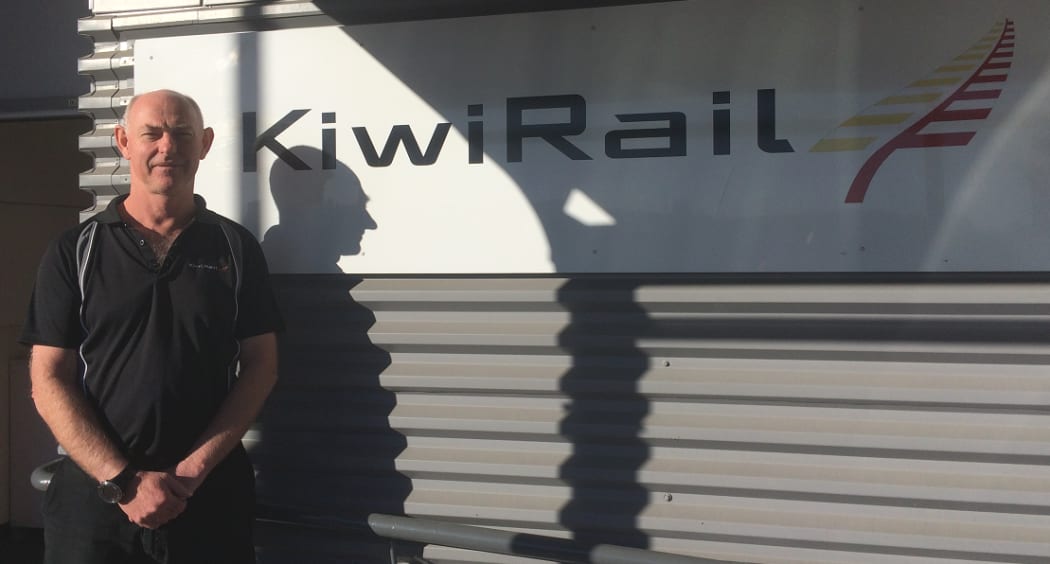
Alistair Cumming Photo: Katy Gosset/RNZ
Cumming has been involved in nine level crossing accidents, two of them fatal. "I still think about them."
He admits the job can entail seeing things "you wish you'd hadn't seen".
"You join any occupation to face that and the answer is, probably not, but it's the nature of the beast."
Cumming says, in some cases, a crash was caused by a genuine driver mistake. He was near Ashburton when a driver turned his truck and trailer onto the tracks in front of the train. The collision "bowed the truck just like a banana", but luckily both men were unharmed.
"There's not a lot you can do in probably two seconds; you certainly do hit the emergency brake, you do take self-preservation actions."
He said the driver had failed to see the train or hear the warning alarms. The truck was fully laden and weighed about 20 tonnes. "But against 800 tonnes and 80 kilometres, it just gets knocked out of the way."
Jason Lawn - Line Haul Operations Manager, KiwiRail
"It was that close that I saw the baby capsule in the rear of the car. I saw the baby's eyes and it was just about too late."
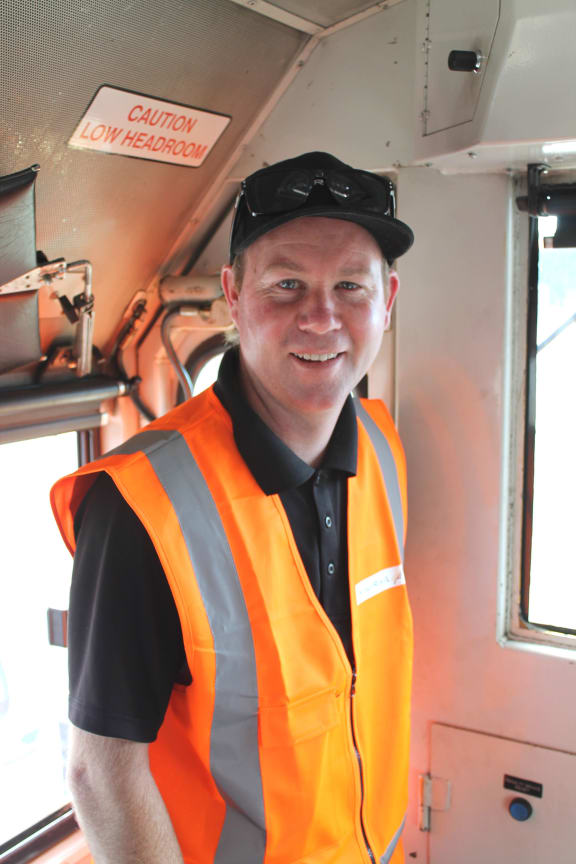
Jason Lawn Photo: Katy Gosset/RNZ
Jason Lawn is a third generation railway man.
"I grew up in a rail family, born in a railway house and rail's just been a part of my life for 37 years."
He remembers visiting the depot and watching his father driving the passenger train.
"The guys I looked up to, I now manage which is quite honourable for me." "It's a great environment to work from and I'm quite proud to say I work for KiwiRail."
But part of the job is dealing with constant close calls as members of the public venture into the rail corridor.
Jason has had a "lucky career" and has not experienced a fatality but he came close when a mother drove across the track in front of him, with her baby in the back seat.
"That baby's face has stayed with me over that level crossing. That's something that's hard to burn out of your eyes really. It sticks in your memory"
Because locomotive engineers were sole operators, it is a side of the business no one else sees, he says. "By having a near miss at the start of a shift it really puts you on edge."
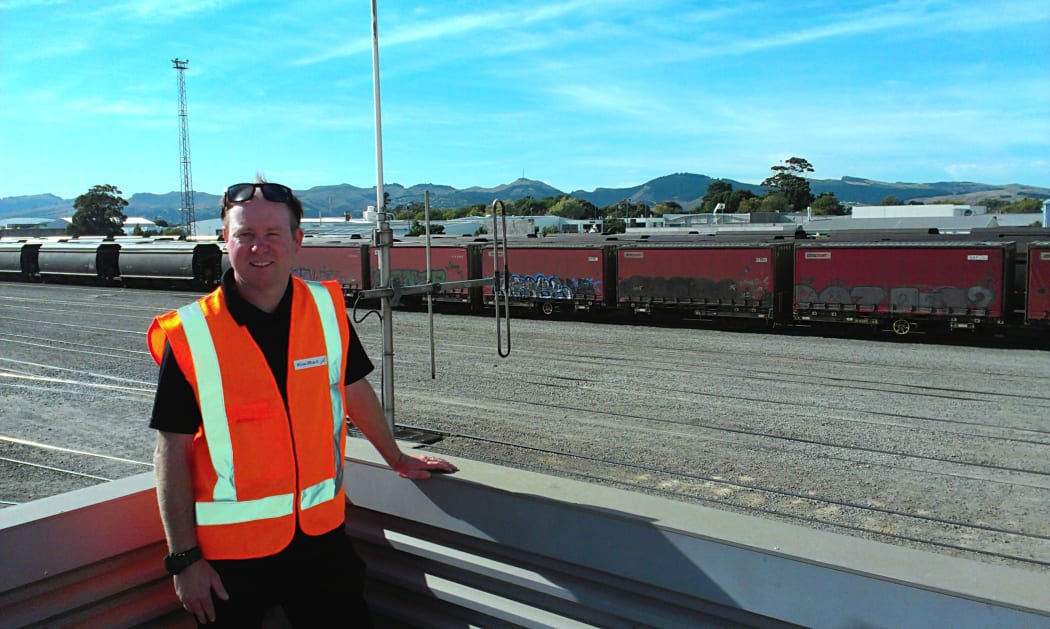
Jason Lawn at Kiwi Rail's Middleton yard. Photo: Katy Gosset/RNZ
People viewed trains as being slow but, in reality, their speeds could range from 70 to 100 kilometres per hour. A train on a dry track could take 800 metres to stop, he says.
"So these are large, heavy objects and they're really hard to stop."
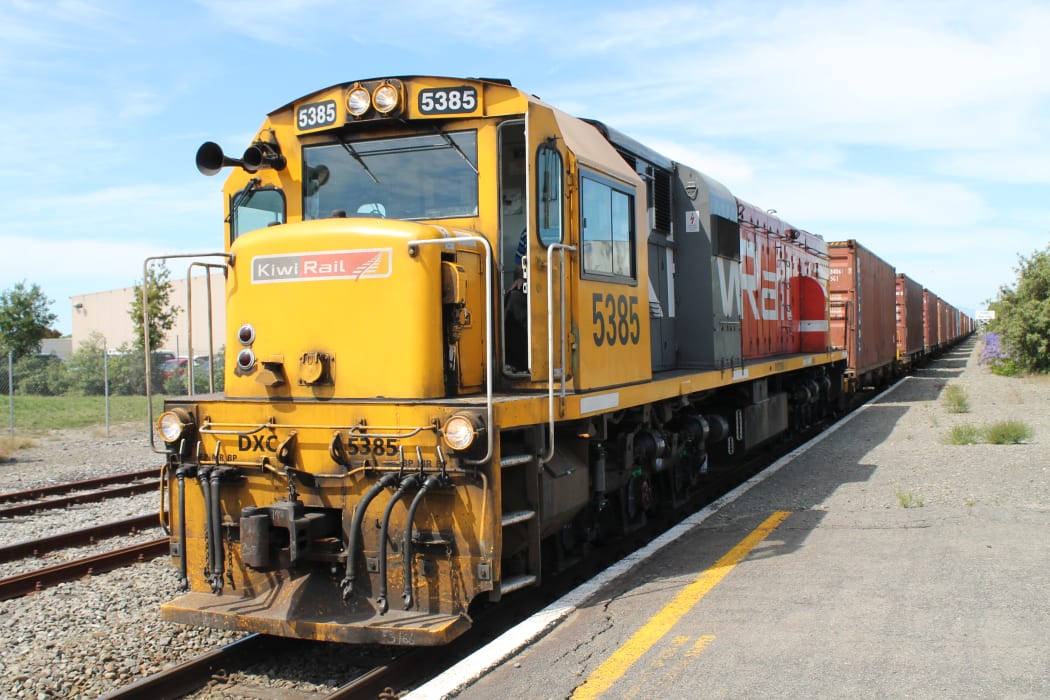
A northbound freight train at the Rangiora Station. Photo: Katy Gosset/RNZ
Speaking up
Once upon a time, locomotive engineers didn't talk about trauma, Lawn says. "We used to keep it inside."
There was collegial support from within the rail family, with other staff contacting an affected driver but nothing formal. However, Lawn says KiwiRail has since introduced a trauma support policy which was vital in helping any locomotive engineer involved in an incident to move on with his or her career.
Many of the Canterbury staff had worked for the business for up to 50 years, he says. "It's the only job they've ever had and to take their career away I'd find, really, a hard pill to swallow."
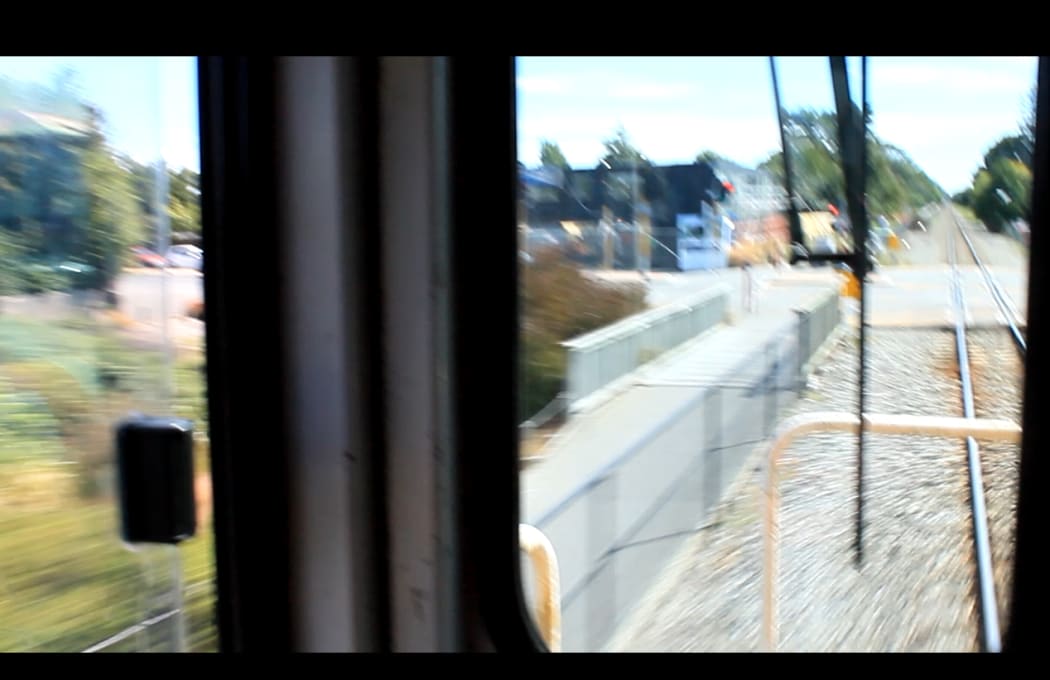
Approaching a level crossing at speed, locomotive engineers are mindful that cars may challenge them. Photo: Katy Gosset/RNZ
If an accident occurred, police and emergency services attended and the rail corridor would be frozen, usually for at least two hours. A counsellor and support plan would be provided for the locomotive engineer, who would be replaced by another driver. KiwiRail would then offer up to two staff, known as rail incident co-ordinators, to secure the site, liaise with emergency services and return the corridor to operational use.
Lawn says this process often involved blessing the locomotive and rail corridor out of respect to Māori and Pacific Island staff. "I think getting the fundamentals right and returning them back to duty with the least disruption to their career is something positive. They haven't asked for this to happen but they've had this put upon them."
Ryan welcomed KiwiRail's trauma support programme, saying it was an improvement on the attitude of days gone by.
"Harden up and get on with it, that mentality, I think, has gone to a large extent."
In previous years, there was an expectation that drivers did their job and didn't complain. "If you did, you were perceived as being somewhat less of a man than the guy next door that just carried on. We need to have an outlet for our emotions."

